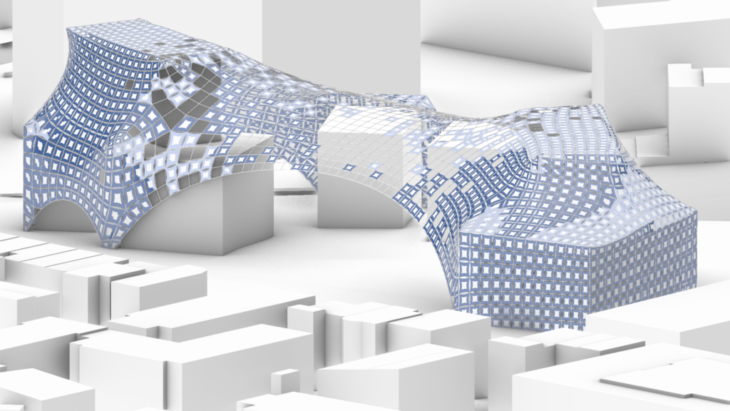Introduction
Porto Desconstruído explores the relationship between the cultural history of Porto and its evolving urban context around the site of the former Boavista Railway Station. Utilizing a program of simple boxes proportioned to typical building typologies in the surrounding neighborhood we developed a program for a cultural center including art and performance venues. A parametric layout based on the nearby urban focal point Praça de Mouzinho de Albuquerque was developed for optimization of natural light as well as the solar heat gain.
For this project we explored the use of various parametric design tools including Kangaroo for the shell development, Octopus for form optimization, Ladybug for environmental analysis, and Ivy and Ngon for panelization of the shell.
Computational Approach
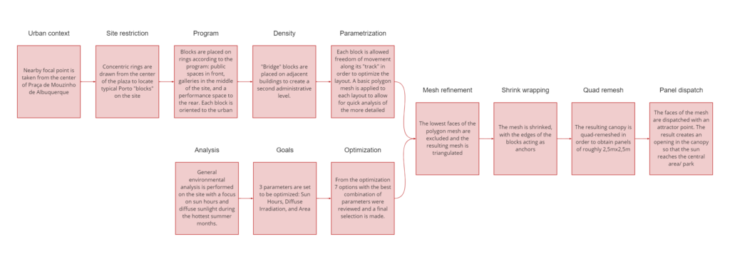
Form Finding
Based on a fixed program including gallery spaces, public spaces, a performance venue and administration, we restricted the placement of the building modules to specific “tracks” at set radii from the center of the circular plaza. Each module is set to a different track and its location on the track is later optimized based on the environmental analysis. A catalog of layouts was developed, and a simple polygon mesh was wrapped around each to approximate the final shell for the solar radiation analysis.
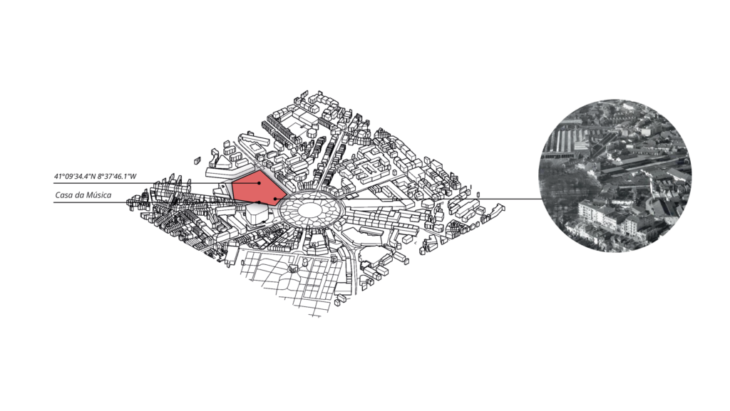
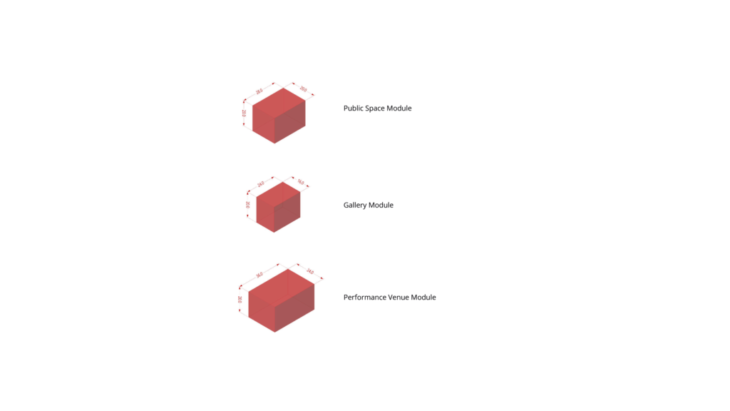
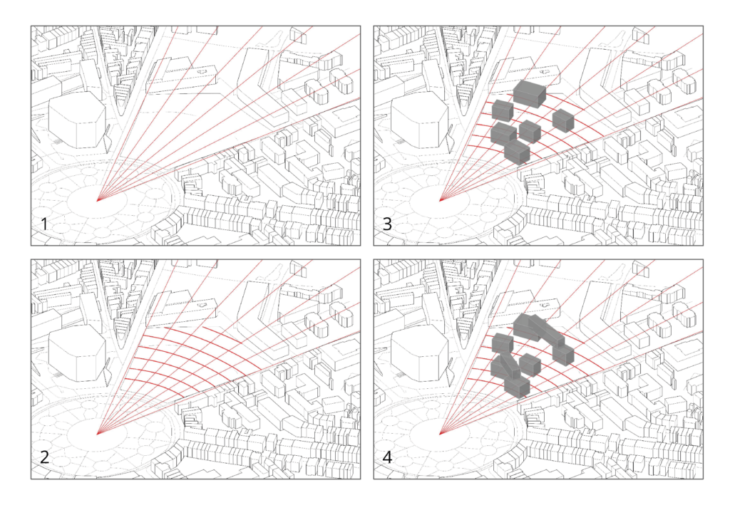
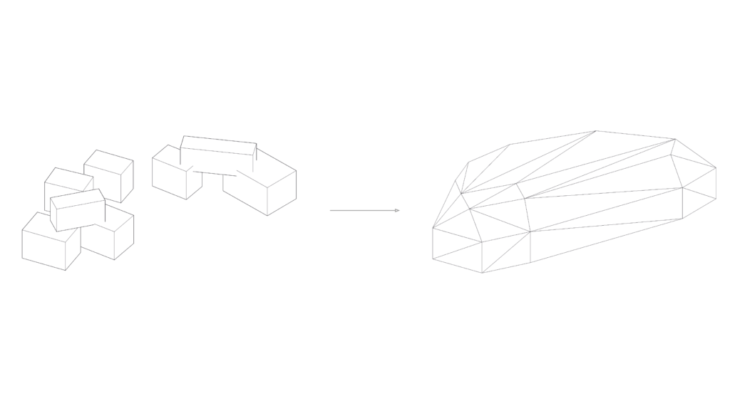
Environmental Analysis
Our goal with the environmental analysis was to maximize the diffuse solar radiation to take advantage of the available natural light in Porto while minimizing direct sun hours on the structure for optimal energy efficiency. Additionally to take full advantage of the site we opted to maximize the total area of the building module layout to take full advantage of the large site and create a shaded open air park in the middle of the site similar to interior courtyards in traditional architecture. From the analysis we selected our preferred layout from the 7 most optimal results.
The Grasshopper plugin Octopus was used to generate our catalog of forms which were then fed into the Ladybug analysis. The final parameters analyzed were: percentage of shell below a specified number of sun hours per day, percentage of shell above a specified number of diffuse solar radiation per day, and total area of site utilized.
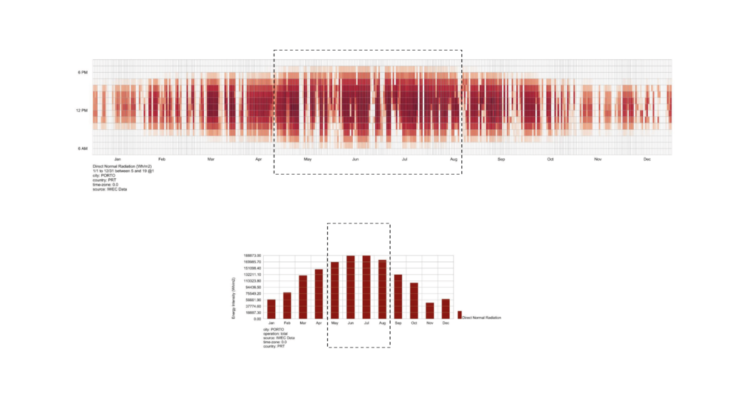
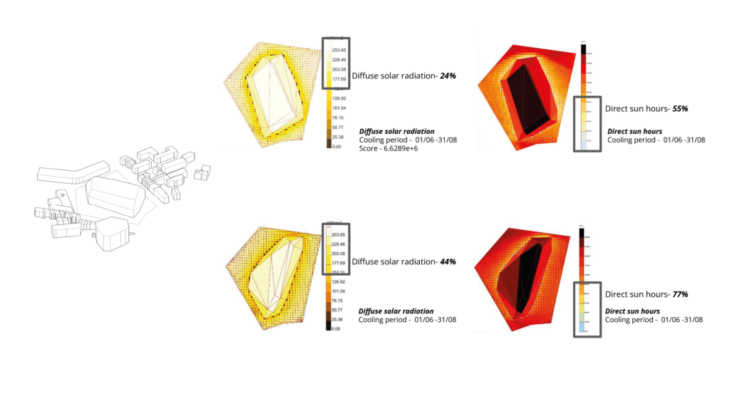
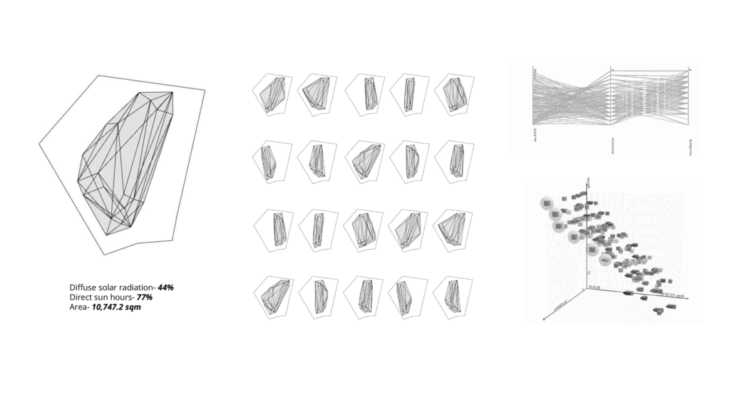
Shell Development
From the final selection of module layouts we then developed the simple polygon mesh shell into a panelized structure. First, the lowest faces of the mesh are excluded and the resulting mesh is triangulated. Next, the mesh is shrinked, with the edges of the blocks acting as anchors. The resulting canopy is then quad-remeshed in order to obtain panels of roughly 2,5mx2,5m. The faces of the mesh are dispatched with an attractor point. The result creates an opening in the canopy so that the sun reaches the central area/ park.
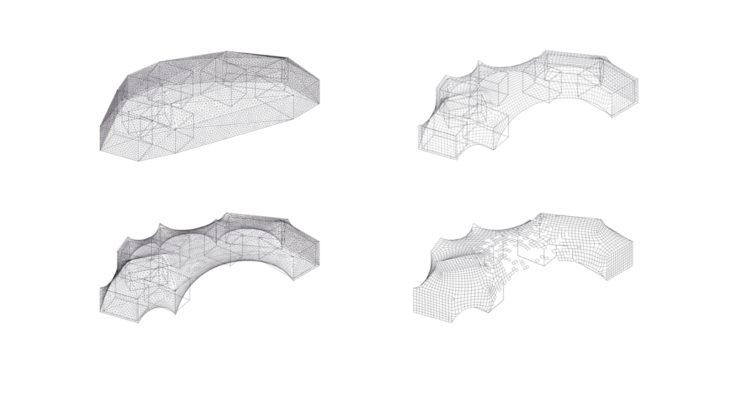
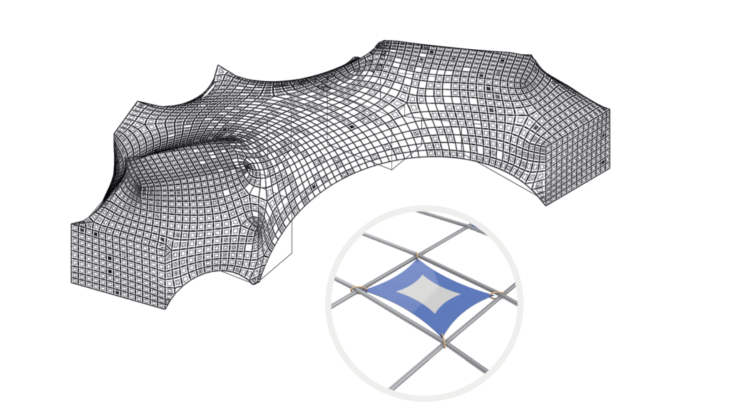
Porto Desconstruído is a project of IAAC, Institute for Advanced Architecture of Catalonia developed at the Master in Advanced Architecture in 2021 by: Michael Joseph Groth, Miran Calmanovici, and Furio Magaraggia; Faculty: David Andres Leon; Facutly Assitant: Ashkan Foroughi Dehnavi; Student Assistants: Uri Lewis Torres, Laukik Lad.
